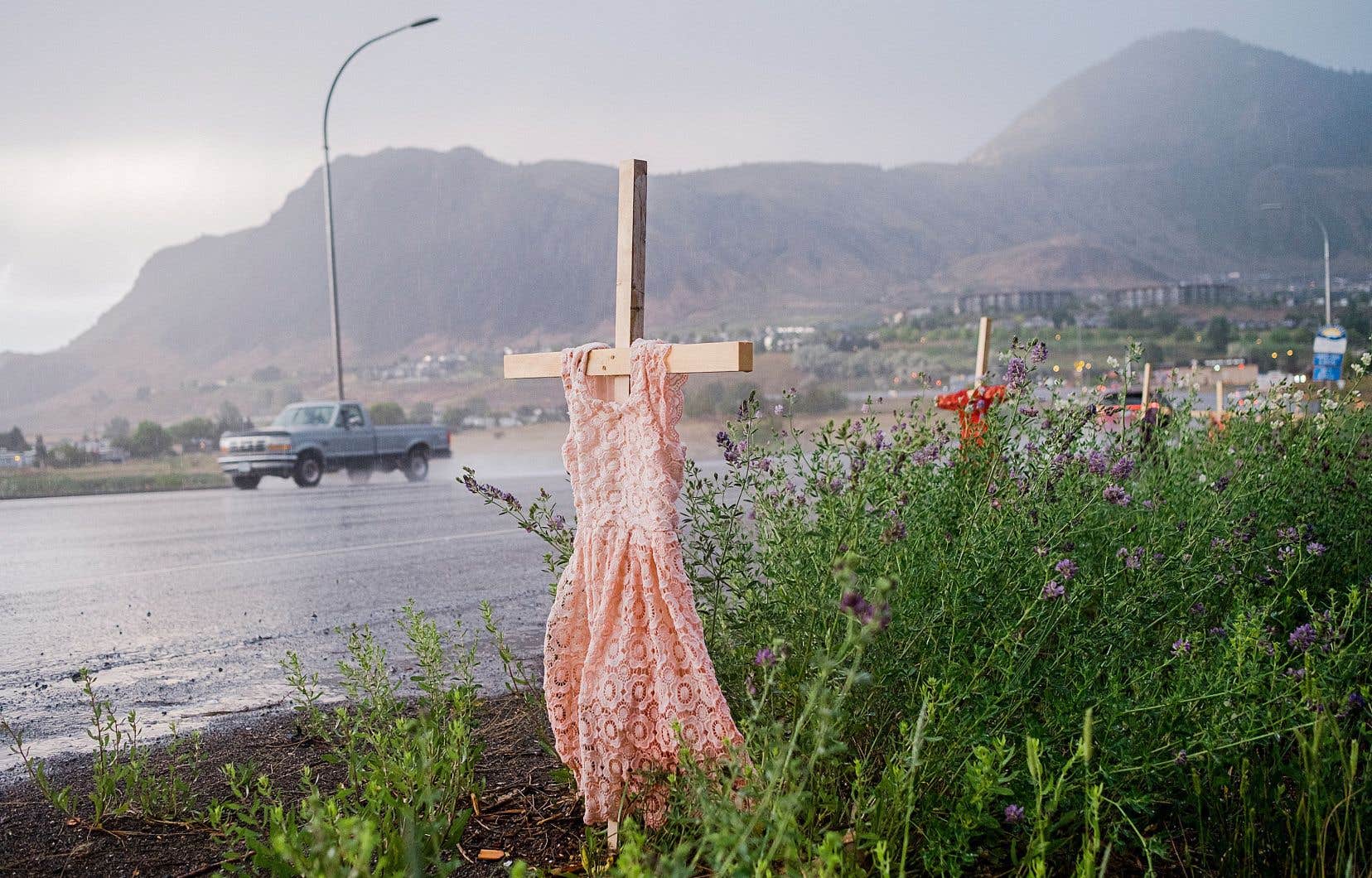Three years after the discovery of potential graves near the former Indian residential school in Kamloops, British Columbia, the Tk’emlúps te Secwépemc First Nation announces that it is still immersed in investigative work.
Although the details surrounding the proceedings remain confidential “in order to preserve the integrity of the investigation”, the First Nation affirmed that “the conclusions of [leurs] Investigators to date agree with the presence of anonymous burials.”
Archival and documentary research, archaeological and anthropological studies as well as forensic methods are part of the “multidisciplinary approach” in progress, it was detailed in a press release.
The Truth and Reconciliation Commission of Canada had identified at least 51 children who died at the Kamloops residential school between 1914 and 1963.
“The investigation continues to be conducted in accordance with Secwépemc laws, legal traditions, worldviews, values and protocols. We are taking steps to ensure that the investigation is conducted in a manner that does not preclude or interfere with potential future legal proceedings,” the community says.
The discovery of the presumed remains of 215 children buried on the site of the former residential school using ground penetrating radar caused shock waves across Canada in 2021. Many other communities have taken steps on the grounds of former residential schools since.
Asked a week ago about the status of searches for anonymous graves across the country, the Department of Crown-Indigenous Relations and Northern Affairs Canada has still not responded to the Duty.
Wave of negationism
In her letter addressed to the public and indigenous communities, the chief (Kukpi7) Rosanne Casimir also deplores “all the misinformation and targeted denial” regarding residential schools.
“To refute the very real harm caused by Holocaust deniers, we encourage you to speak out and organize. The truth about the realities of residential schools and missing children must be respected,” she writes.
Last year, the extraordinary independent interlocutor for missing children and anonymous graves and burials linked to residential schools, Kimberly Murray, asked that federal parliamentarians study “legal mechanisms” to sanction the denial of the location of the attacks suffered in residential schools.
Federal Justice Minister Arif Virani said last fall that he would examine the options put forward by Mr.me Murray.
In its provisional report last year, the latter deplored the increase in attacks by “deniers” and the “prolific violence” against First Nations when they announce the discovery of possible anonymous graves.
More than 150,000 indigenous children were placed in residential schools, a majority of which were run by the Catholic Church. Around 6,000 indigenous children have died in these facilities, but experts estimate the toll could be higher.
In Quebec, twelve federal residential schools and homes were in operation for nearly 60 years. Some residential schools were located side by side, such as Fort George, east of James Bay, and Mistassini, north of Roberval.
